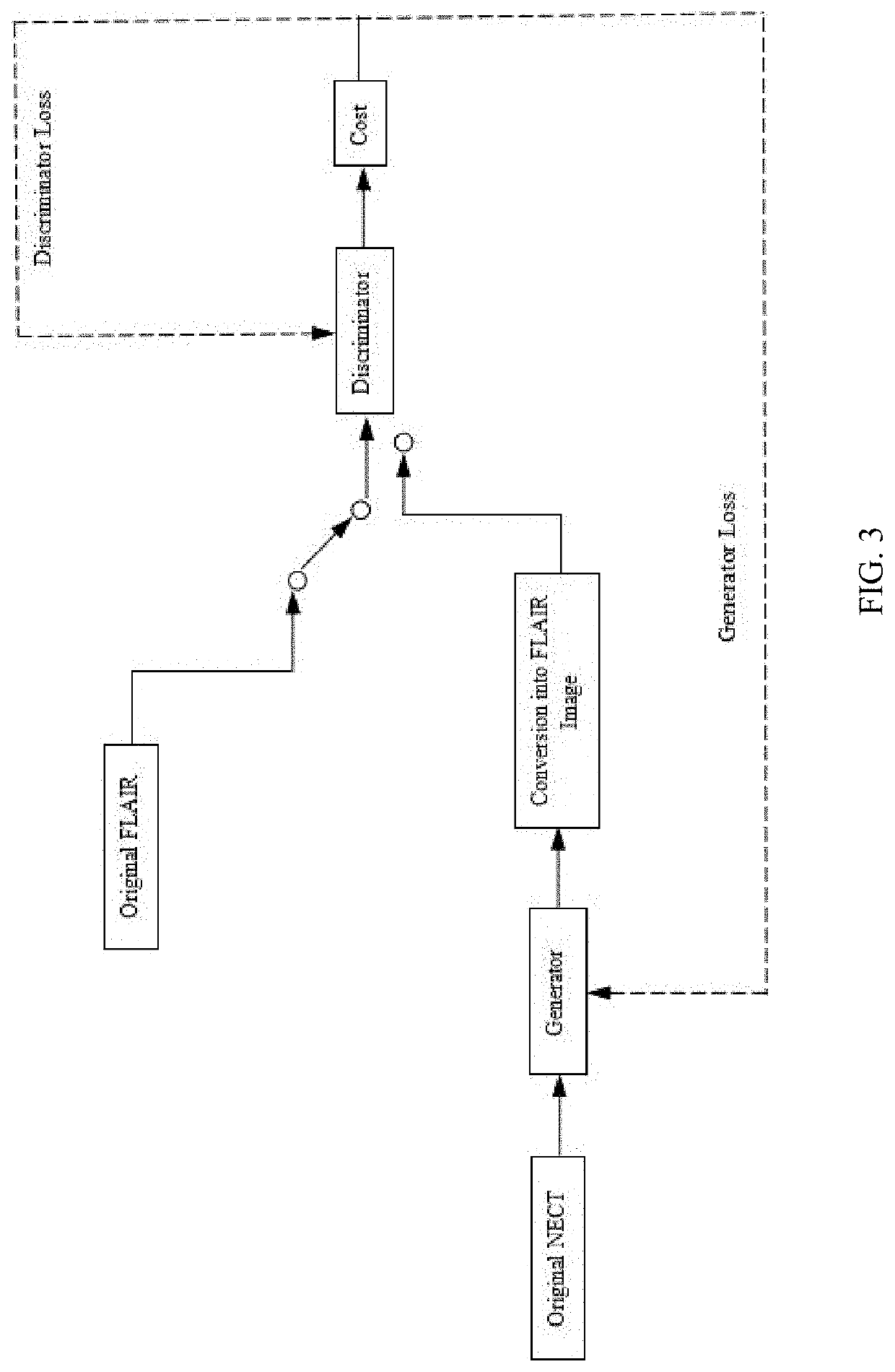An Auxiliary Diagnostic Model and an Image Processing Method for Detecting Acute Ischemic Stroke
a diagnostic model and image processing technology, applied in the field of medical image processing, can solve the problems of poor sensitivity to the early small infarction, heavy stress on the observer, and huge consumption for patients, and achieve the effect of rapid diagnosis of strok
- Summary
- Abstract
- Description
- Claims
- Application Information
AI Technical Summary
Benefits of technology
Problems solved by technology
Method used
Image
Examples
embodiment 1
[0035] An auxiliary diagnostic model for detecting acute ischemic stroke, as shown in FIG. 1, comprising the generative adversarial network model 1, and the generative adversarial network model 1 comprises the first three-dimensional convolutional neural network and the second three-dimensional convolutional neural network, the first three-dimensional convolutional neural network is the generator G2 that is used to complete 3D image-to-image conversion, and the second three-dimensional convolutional neural network is the discriminator D3 that is used to distinguish the authenticity of the input images. The generator G2 comprises two first three-dimensional convolutional layers 4 for downsampling, residual blocks 5 and three-dimensional transposed convolutional layers 6 for upsampling. The discriminator D3 comprises second three-dimensional convolutional layers 7 and output layers 8.
[0036]In the embodiment, the auxiliary diagnostic model for detecting stroke is a generative adversari...
embodiment 2
[0043] an image processing method for detecting acute ischemic stroke, as shown from FIG. 2 to FIG. 5, comprising the following steps:
[0044]S1, data normalization, collect NECT images of stroke patients and FLAIR images corresponding to NECT images from the hospital, then make data processing of the collected NECT images and FLAIR images, then make data normalization of the collected NECT images and FLAIR images;
[0045]S2, model creation, create the generator G2 to complete 3D image-to-image conversion and the discriminator D3 to distinguish the authenticity of the input images, and create the generative adversarial network model, the generator G2 and the discriminator D3 are two different three-dimensional convolutional neural networks;
[0046]S3, model training, define the complete training loss of the generative adversarial network model created in step S2 as
G*=argminGmaxDLGAN(G,D)+λLL1(G),
and train the generative adversarial network model 1, in which, a gradient penalty te...
PUM
 Login to View More
Login to View More Abstract
Description
Claims
Application Information
 Login to View More
Login to View More - R&D
- Intellectual Property
- Life Sciences
- Materials
- Tech Scout
- Unparalleled Data Quality
- Higher Quality Content
- 60% Fewer Hallucinations
Browse by: Latest US Patents, China's latest patents, Technical Efficacy Thesaurus, Application Domain, Technology Topic, Popular Technical Reports.
© 2025 PatSnap. All rights reserved.Legal|Privacy policy|Modern Slavery Act Transparency Statement|Sitemap|About US| Contact US: help@patsnap.com



